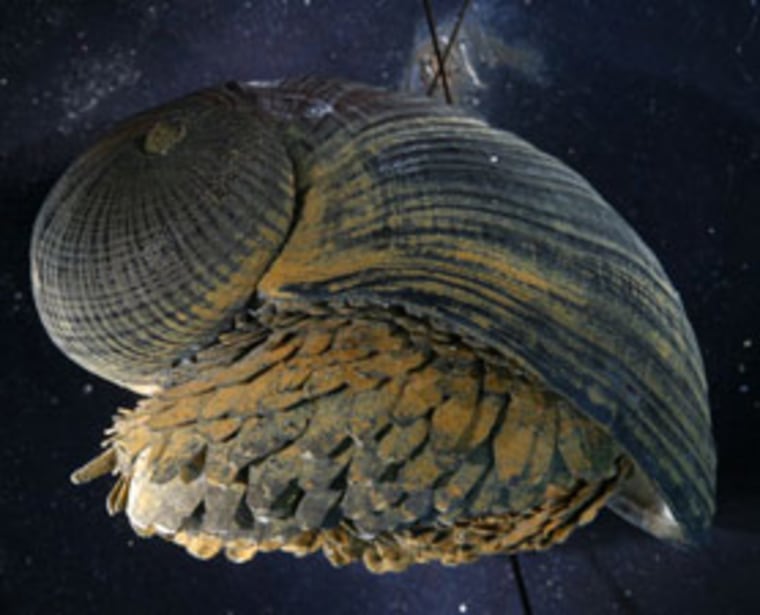The iron-plated shell of a deep water snail could inspire a new class of life-saving armor for soldiers, according to new research published in the current issue of the Proceedings of the National Academy of Sciences.
"Typically mollusks have shells made of calcium carbonate, covered in a thick organic layer," said Christina Ortiz, a scientist from the Massachusetts Institute of Technology and co-author of the new paper. "This mollusk has an additional layer of iron incorporated into its shell, which makes it really unique."
The snail, Crysomallon squamiferum, is known as the scaly-foot gastropod, and lives deep beneath the surface of the Indian Ocean near a group of hydrothermal vents. The mollusk takes its name from the soft, fleshy underside on the snail's foot, which look like overlapping fish scales.
The iron armor protects the snail against its two biggest predators: cone snails and crabs.
Cone snails attempt to kill C. squamiferum by using a hypodermic needle to spear the armored snail and inject a deadly toxin. Fist-sized crabs will grab the snail and squeeze it, sometimes for days, until the mollusk's shell finally cracks.
For their study, scientists at MIT simulated the attacks of both predators to test the strength of the snail's iron-plated shell. Wielding a very sharp, diamond tipped nanoprobe, they mimicked the attack of the cone snail. They also applied the same amount of force over a bigger area, replicating a crab attack.
Despite the researchers' assault, the iron armor, combined with the calcium carbonate and soft organic layers of its shell, protected the snail from both attacks in two ways.
When the nanoprobe was used against the iron scales, the armor, arranged in waves that helped to dissipate the force, stopped the needle from penetrating. The shell cracked during the experiments, but never broke.
For the second simulation, the snail's armor dissipated the shell-crushing force of the crab's claw across microfractures, tiny cracks that never develop into life-threatening break. The trilayer shell design also absorbed the impact and stopped any small cracks from spreading across the rest of the shell.
Applying much higher forces, the kind that soldiers and police experience when a projectile strikes the ceramic and Kevlar of their bullet-resistant vests, would shatter the shell. Nevertheless, Ortiz says her research is already leading to new advances in body armor.
Ortiz also mentions that the snail's shell design could inspire other applications as well. Stronger, lighter materials could make water main lines last longer, protect football players from concussions, or reduce wear and tear on clothing or cooking equipment.
However, the materials the snail employs wouldn't be used in next generation body armor, says Ortiz. Instead, the trilayer organization (hard-soft-hard) would remain, but the iron and calcium carbonate would be replaced by man-made ballistic materials to improve strength.
"Nature generally uses really weak materials but arranges them in a geometry that amplifies their mechanical properties," said Ortiz.
Other scientists agree that simply wearing the snail's shell won't stop a bullet. "I like the word bioinspired instead of biomimetic," said David Dunard, a professor at Northwestern University who was not involved in the research.
Future researchers could take the concept and organization of the snail's shell and optimize it for the needs of soldiers or police.
